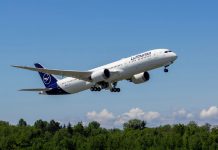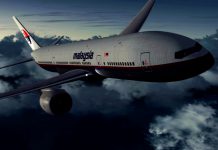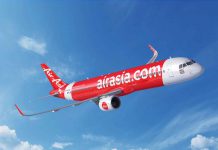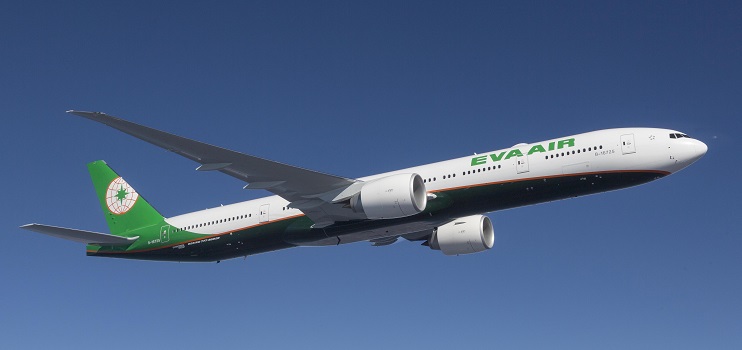No mere paint job, new aircraft liveries tell a tale. They’re the public-facing reflection of an airline’s identity and aspirations. That’s the case with EVA Air, the expansive Taiwanese carrier. It just took delivery of its 22nd Boeing 777-300ER at Paine Field, Everett, Washington State.
“We just did some adjustment,” says EVA President Austin Cheng. The new paint scheme is less cluttered, less busy than the old one. Gone are the big, bold letters on the side of the fuselage advertising that the aircraft is, indeed, a 777-300ER. Vanished are the orange swooshes. “We made it simpler,” says Cheng. The straight horizon line (the line bisecting the bottom of the aircraft from the top) is absent on this big Boeing leased from Air Lease Corporation. That line’s been replaced by more of an aerodynamic curve.
It will take a while for the new paint scheme to start showing up on the rest of the EVA fleet.
Along with the rollout of a new exterior scheme comes an interior change: new boarding music composed by renowned Asian composer Ricky Ho. Sweeping and soulful, the music mirrors the distinct white compass on the vertical stabilizer (vertical tail) of the aircraft. The idea is to prep passengers with a visual image of a worldwide airline before reinforcing the message with music as they enter the cabin. That cabin was recently revamped to include an upgraded three-class layout.
The passenger part of EVA’s overall package earned the carrier a seven-star ranking from this website, the highest you can get.
If the style is sleek, the substance of no-longer-under-the-radar EVA Air is focused squarely on safety. In this category too the airline earned seven stars.
Safety starts at the top, in the left seat of a B777 occupied by EVA Air Chairman K.W. Chang. And he’s not in the pilot-in-command’s seat for a marketing photo-op. He’s a rated B777 captain, the person who flies B-16725 (the aircraft’s registration number) on to Taipei after all the pre-flight ceremonies.
“Most chairmen are financial people,” smiles Chang. “Everybody talks about safety, but we really understand [it].”
Chang is a true believer in CRM—cockpit resource management. CRM, when it works right, helps ensure the crew flies the airplane in a coordinated, mutually supportive fashion. Concrete communication is key here, a sometimes culture-defying interaction that allows a junior co-pilot to tell a senior captain, when they’re about to a mistake. Up front, behind those locked cockpit doors CRM is king—at least on the airlines that understand its importance. “We want to make sure everybody understands [CRM],” says Chang, “the principles behind it, not just the letter of the law.”
The challenge, of course, is ensuring as EVA grows those principles remain strong. By the end of 2016 the airline plans to have added seven more 777-300ERs and six more A321-200s, the latter for shorter-range regional flights. By that time the green and white fleet will sport more than 80 aircraft.
One way Chang intends to scale up safety as the airline expands is by keeping the principle that pilots should fly no more than one aircraft type. That way, the chairman says, “They become specialists on the aircraft.”
Chang should know. This decidedly un-desk-bound airline executive doesn’t confine his time in the left-hand seat to ferry flights. He’s not a captain in name only. He pilots regularly-scheduled passenger flights “probably two or three times per month.”
It’s an uncommon approach to the airline business that makes considerable common sense.
EVA Air has also committed to be 24 Boeing 787-10s..
























